We interact with surfactants every day without realizing it. Surfactants are in the toothpaste we use to brush our teeth, in creams and sunscreens to make emulsions of oil and water based ingredients, the pharmaceuticals we ingest, and – at the forefront of public attention due to the COVID-19 pandemic – the active component in the many cleaning products we use to keep our surroundings and ourselves clean. Industrial applications are equally varied, with surfactant applications ranging from agriculture to remediation.
Not only do we use surfactants on and around us – naturally occurring surfactants are produced inside us! (as well as other living organisms) In this article, we will define surfactants and explore how such a ubiquitous chemical works.
What are surfactants?
Surfactants are type of molecule that lowers the surface tension between two materials, either a gas and a liquid (e.g. water surface tension), two liquids (e.g. water and oil), or a liquid and solid (water and dirt particles).
The origin of the word surfactants describes just that: surfactants is a contraction of Surface Active Agents.

All surfactants are molecules that consist of a hydrophilic “water loving” (or water soluble) head, and a hydrophobic “water hating” (or oil-soluble) tail. In more technical terms, surfactants are amphiphilic molecules, meaning they are molecules that contain both a hydrophobic and hydrophobic region.
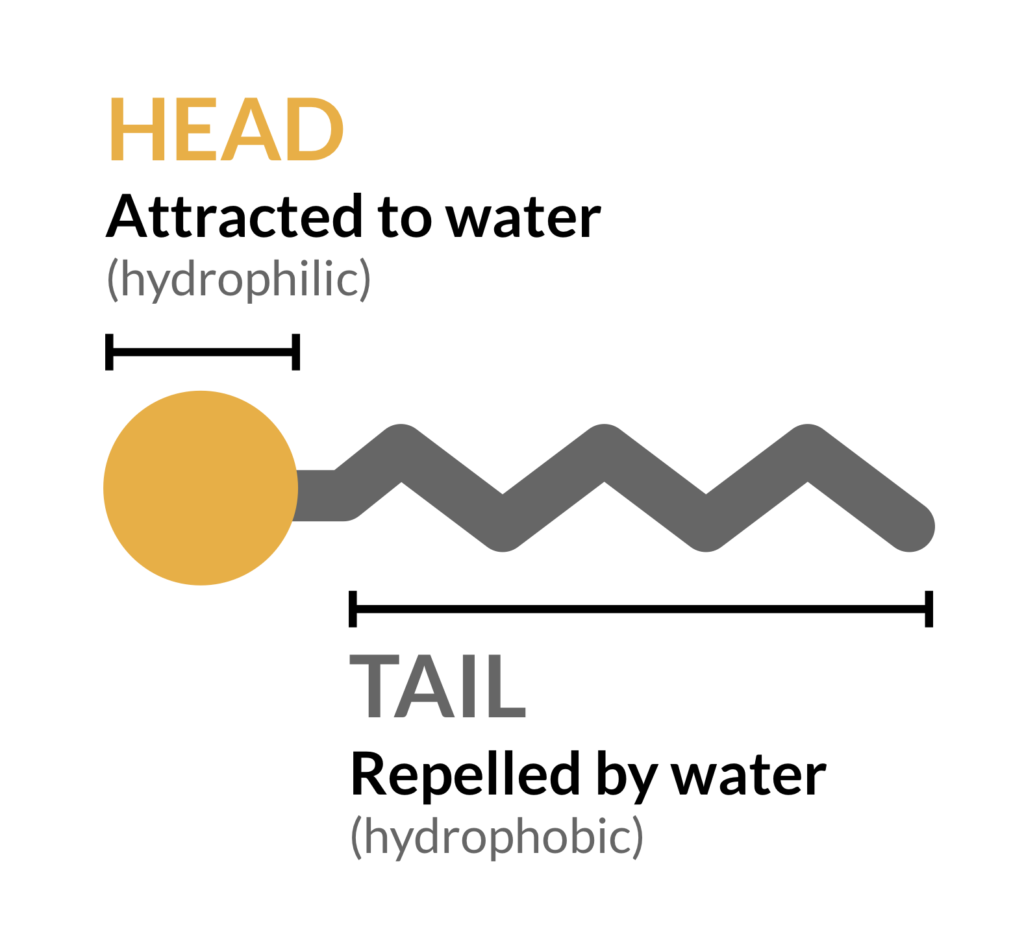
Though the actual structure of this head and tail can vary widely between different types of surfactants (which results in different behaviours and chemical properties – discussed later), the core principle remains the same.
How do surfactants work?
Let’s start by considering what happens when we add surfactants to a container of water. Surfactants first gather on the surface of the water to form a layer at the water-air interface, with the water-loving (hydrophilic) heads towards the water, and the water repelling (hydrophobic) tails in the air. This results in a decrease in water surface tension – a key properties of surfactants.
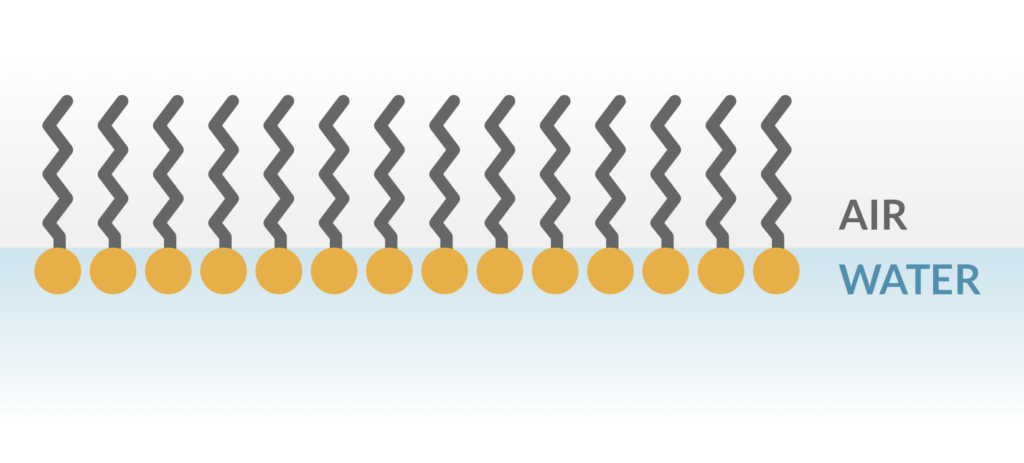
Critical micelle concentration (CMC)
As surfactant concentration increases, something interesting occurs: Micelles, or “balls” of surfactant form, with inward pointing tails away from the water. The surfactant concentration at which micelles begin to form is called the critical micelle concentration (CMC). This property varies by the type of surfactant, and affects efficacy and required concentration needed for a given application. Adding more surfactant beyond the CMC results in increased micelle formation, while surface tension at the water-air interface remains low.
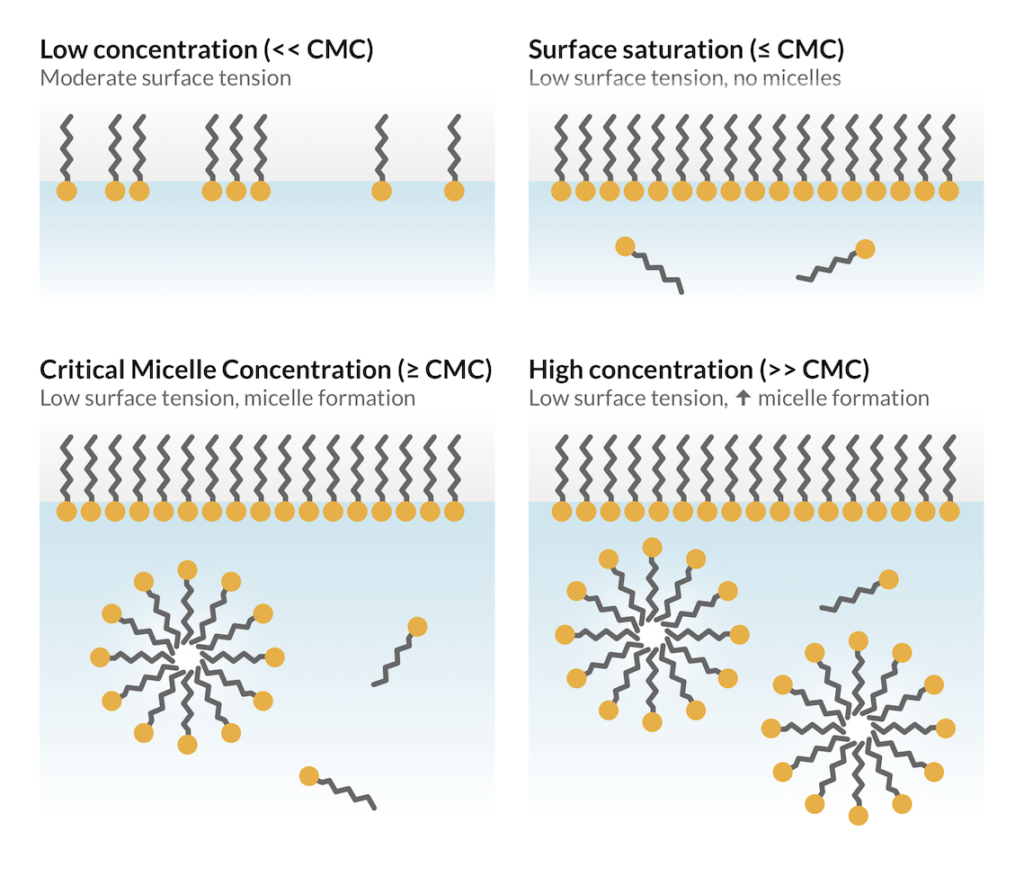
Micelle formation is crucial for many surfactant applications, as it facilitates the break down of substances like oil that are normally insoluble in water. In the presence of dirt and oils, micelle-structures form with hydrophobic and oil-like particles forming the centre, and hydrophilic head faces outwards towards the water filled environment. Surfactants with a low CMC need less surfactant to reduce the reduce surface tension and form micelles, and are thus more efficient.
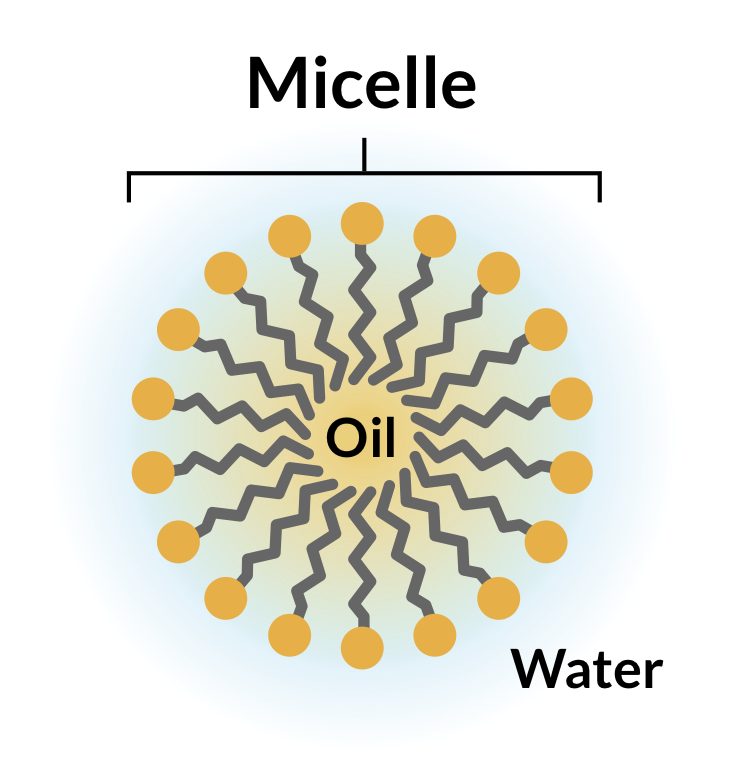
Types of surfactants
There are as many different surfactants as there are applications! These differ in their chemical structure and properties, which affects strength, foaming properties, compatibility with other chemicals, toxicity, and biodegradability.
Surfactants can be broadly fall into two categories, based on the charge of the head group.
Ionic Surfactants
Ionic surfactants have a charged (positive or negative) head, and can be further classified into 3 sub-groups:
- Cationic Surfactants: Head possesses a positive charge
- Anionic Surfactants: Head possesses a negative charge
- Zwitterionic (Amphoteric) Surfactants: Head has both a negative and positive charge
Non-ionic Surfactants
Non-ionic surfactants have a neutral head (no positive or negative charge). This class of surfactants can be either hydrophilic (more water loving) or lipophilic (more oil loving) depending on the relative strength of the head and tail. This is called the Hydrophilic-Lipophilic Balance (HLB), an important characteristic for non-ionic surfactants for which the optimal behaviour is highly application dependent.
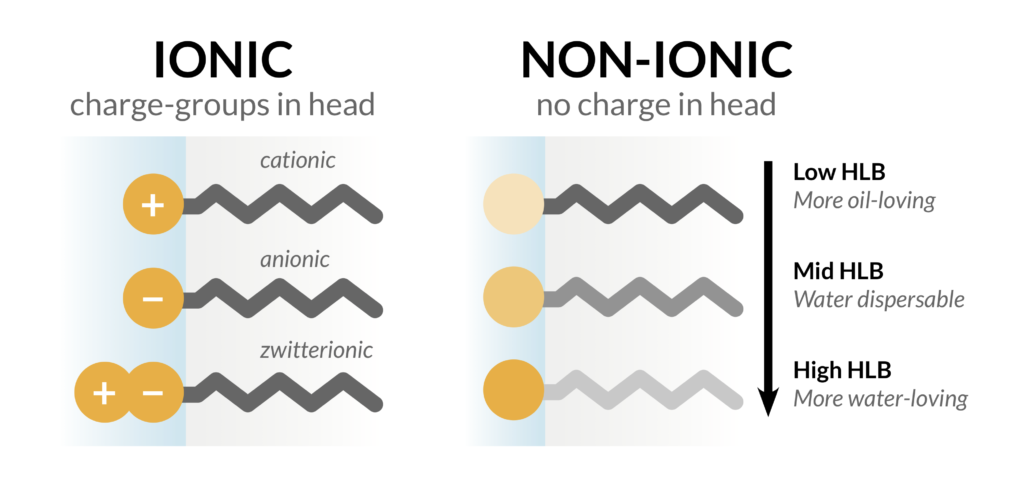
Bacteria and viruses: How surfactants can kill (to protect you)
All cells are encased by fat-based (lipid) membranes, in which other molecules like proteins are embedded. The lipids that make up the cell membrane are called phospholipids, which consist of a water-loving (hydrophilic) head, and two long water-hating (hydrophobic tails).
Sound familiar?
Indeed, the phospholipids that surround living cells are surfactants themselves! Surfactants used in cleaning can kill bacteria by interfering with and breaking up the cell membrane components such as lipids and proteins. The hydrophobic surfactant tail embeds itself in the lipid layer surrounding cells, and causes it to break apart, which can be easily washed away with water.
This review article (Falk 2019, J Surfactants Deterg) discusses surfactants as antimicrobials in much greater detail.
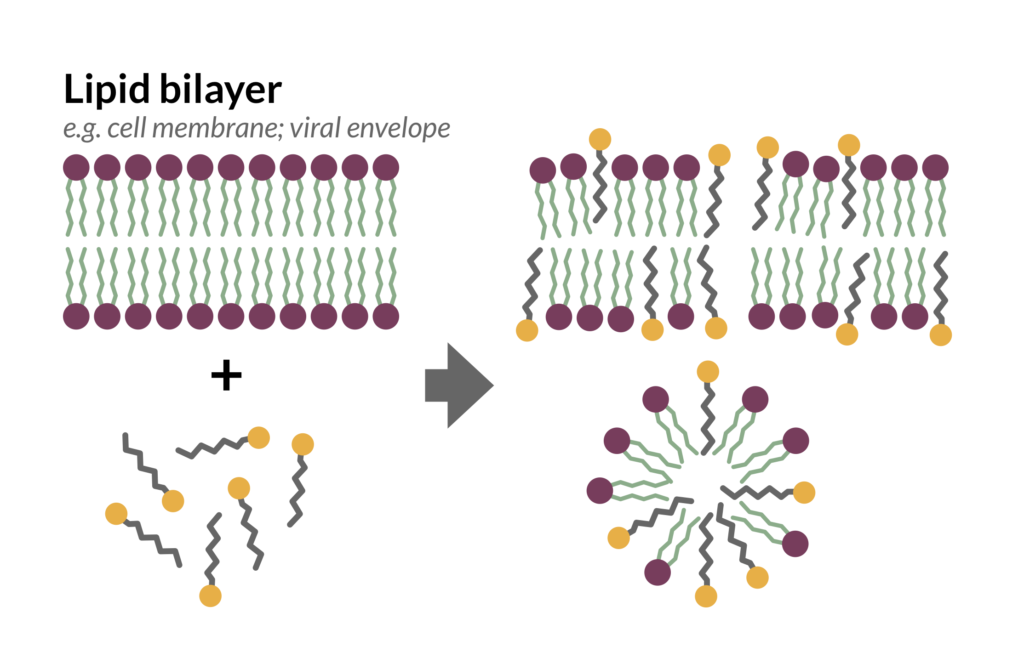
What about viruses?
Viruses are diverse infectious particles that can only replicate inside of a cell. They fall into one of two broad categories:
- Enveloped Viruses: Common examples include coronaviruses (e.g. causing COVID-19) and influenza viruses (causing the flu)
- Non-Enveloped Viruses: Norovirus (causing stomach flu) and polioviruses
Anti-viral capacity depends on the type of surfactant, as well as the type of virus. Surfactants can break down enveloped viruses in much the same way as cell walls are broken down – by attacking and breaking down the lipid membrane that surrounds and protects the virus. Non-enveloped viruses can be more difficult to inactivate due to the stable protein shell (capsid), some surfactants are capable of destroying the protein capsid as well.
Regardless, particularly in the case of hand-washing, viral inactivation is not the only way to rid yourself of viruses – the combination of surfactant activity and mechanical agitation (such rubbing hands together) helps lift viruses from surfaces so they can be easily removed with water.
This video summarizes how soap (or more accurately, the surfactants in soap) break down viruses such as COVID-19.
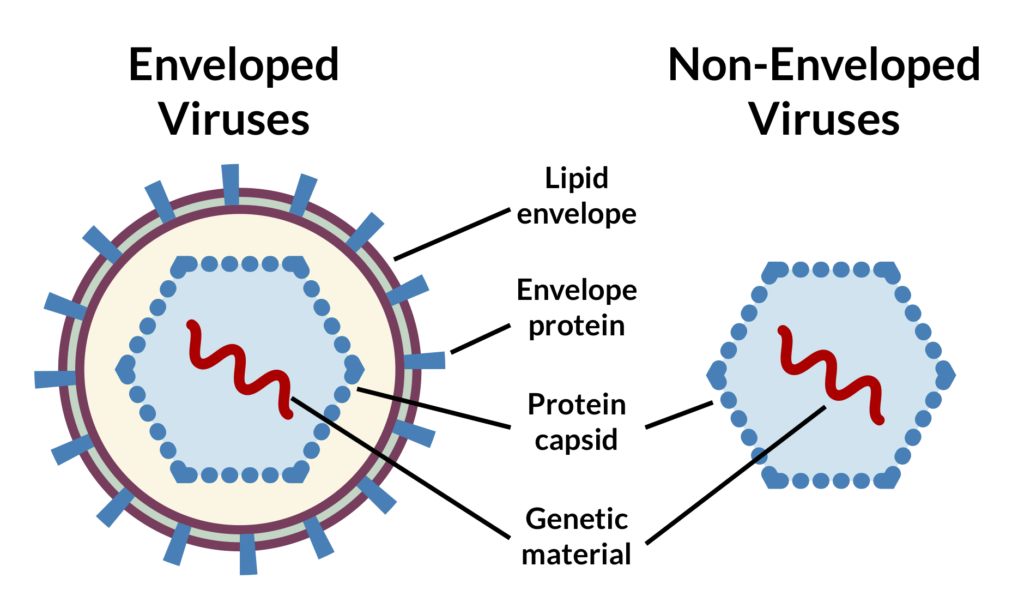
Summary
Surfactants are a fascinating group of molecules that play an important role across many areas of industry and our personal lives. Though varying widely in chemical properties, safety, and capabilities, the basic principles of how surfactants work remain the same.